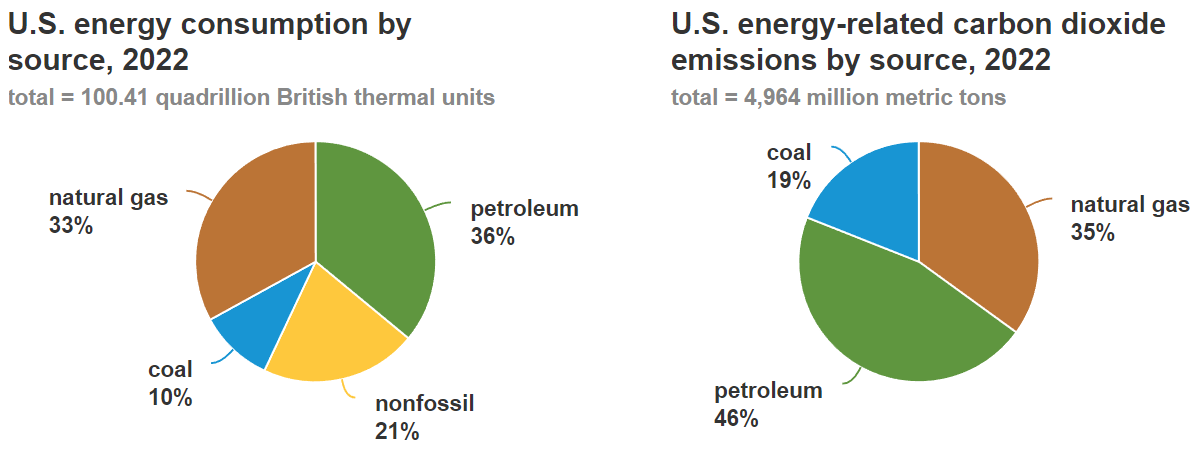Causes of Global Warming
In 2018, building materials (especially steel, brick, and steel) were responsible for 11% of
global greenhouse gas emissions.[1].
In 2022, coal accounted for about 11% of U.S energy consumption but 21% of energy-related CO2
emissions, making coal the dirtiest energy of the coal, petroleum and natural gas fossil fuels triad
[1].
In 2022, natural gas accounted for about 32% of U.S energy consumption but 34% of
energy-related CO2
emissions [1].
In 2022, petroleum accounted for about 36% of U.S energy consumption but 46% of energy-related
CO2
emissions [1].
Clouds created by
contrails Contrails are water condensation trails that are often visible as linear clouds behind airplanes. They are caused by water vapour in the air condensing around soot and other particles emitted from the jet engines in cold air (below about -40oC/-40oF). Under the right conditions, contrails can be hundreds of kilometres in length and exist for several hours.
account for roughly 57% of aviation's global warming impact [1].2.00bn tonnes 1.97bn (long) tons
Greenhouse gas emissions dipped by a mere
2.00bn tonnes 1.97bn (long) tons
while
most of us were confined to our homes in 2020 due to the Covid-19 pandemic [1].54.6bn tonnes 53.7bn (long) tons
Greenhouse gas emissions for 2021 are
54.6bn tonnes 53.7bn (long) tons
, up
more than thirteen-fold from 4.0bn tonnes 3.94bn (long) tons
in
1850 [1].